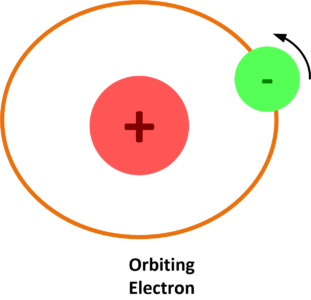This article examines key differences between diamagnetic, paramagnetic, and ferromagnetic materials.
In order to classify materials as magnetic or non-magnetic, it must be determined whether or not forces act on the material when a material is placed in a magnetic field. If a bar of any given material is suspended in a magnetic field, it will either turn at a right angle to the field or align with the field. If a bar of any given material is suspended in a magnetic field, it will either turn at a right angle to the field or align with the field.
Diamagnetic Material
A material that turns at a right angle to the field by producing a magnetic response opposite to the applied field is called diamagnetic material such as silver, copper, and carbon have permeability slightly less than free space (for copper, μr= 0.9999980).
Paramagnetic Material
A material aligning itself with the applied field is called paramagnetic material. Paramagnetic materials such as aluminum and air have permeability slightly greater than that of free space (for air μr =1.0000004). The effects of diamagnetic and paramagnetic are negligibly small so materials possessing these weak phenomena are said to be non-magnetic.
- You May Also Read: Difference between Electric and Magnetic Circuits
Ferromagnetic Material
Within the paramagnetic class of materials, is a special classification of materials called ferromagnetic material. These materials are strongly attracted to magnets and exhibit Paramagnetism to a phenomenal degree. Ferromagnetic materials such as iron, steel, and cobalt and their alloys have relative permeability extending into the hundreds and thousands and are said to be magnetic.
The magnetic properties of matter are associated with the spinning motion of electrons in the third shell of the atomic structure.

An electron revolving in an orbit around the nucleus of an atom is equivalent to a tiny current loop, which gives rise to a magnetic field. Also, the magnetic field is associated with the angular momentum of the electrons’ spin on its own axis.

In most atoms, there is a tendency for both the orbital and spin angular momentum to cancel each other by pair formation. For example, an electron spinning clockwise can pair with an electron spinning counterclockwise. Their total momentum and magnetism are then zero. Variations in this electron pairing account for the weak magnetism of the nonmagnetic materials. Diamagnetism results from an unbalance of the orbital pairing of electrons, whereas Paramagnetism results from an unbalance of the spin pairing of electrons.
| Properties | Ferromagnetic Materials | Paramagnetic Materials | Diamagnetic |
|---|---|---|---|
| State | They are solid. | They can be solid, liquid or gas. | They can be solid, liquid or gas. |
| Effect of Magnet | Strongly attracted by a magnet. | Weakly attracted by a magnet. | Weakly repelled by a magnet. |
| Behavior under non-uniform field | tend to move from low to high field region. | tend to move from low to high field region. | tend to move from high to low region. |
| Behavior under external field | They preserve the magnetic properties after the external field is removed. | They do not preserve the magnetic properties once the external field is removed. | They do not preserve the magnetic properties once the external field is removed. |
| Effect of Temperature | Above curie point, it becomes a paramagnetic. | With the rise of temperature, it becomes a diamagnetic. | No effect. |
| Permeability | Very high | Little greater than unity | Little less than unity |
| Susceptibility | Very high and positive | Little greater than unity and positive | Little less than unity and negative |
| Examples | Iron, Nickel, Cobalt | Lithium, Tantalum, Magnesium | Copper, Silver, Gold |
written by Ahmed Faizan M.Sc. (USA), Research Fellow (USA)
Fine way of explaining, and good article to take facts about my presentation focus, which i am going to deliver in institution of higher education.